
建筑工程管理 安全企业管理 制造企业管理 卫生企业管理 企业转型升级 工程企业管理 企业质量管理 医药企业管理 电力企业管理 企业经济管理 食品企业管理 工业企业管理 软件企业管理 能源企业管理 汽车企业管理 环保企业管理
粤港澳大湾区 消防企业管理 转型升级 装配式建筑 并购重组动态 制造业转型升级 工业转型升级 教育转型升级 外贸转型升级 能源转型升级 地产转型升级 制造业转型与高质量发展 产业转型升级 绿色转型升级 服务业转型升级 产品质量管理 产业科技管理 环境监测
For the entertainment and media industries, 2022 marked an important inflection point. Total global entertainment and media (E&M) revenue rose 5.4% in 2022, to US$2.32 trillion. That represents a sharp deceleration from the 10.6% growth rate in 2021, when economies and industries globally were starting to rebound from the upheaval caused by the covid-19 pandemic. And in each of the next five years, the rate of growth will decline sequentially, so that by 2027 revenue will grow just 2.8% from 2026. That’s slower than the 3.1% rate of overall economic growth that the International Monetary Fund (IMF) projects for that year.
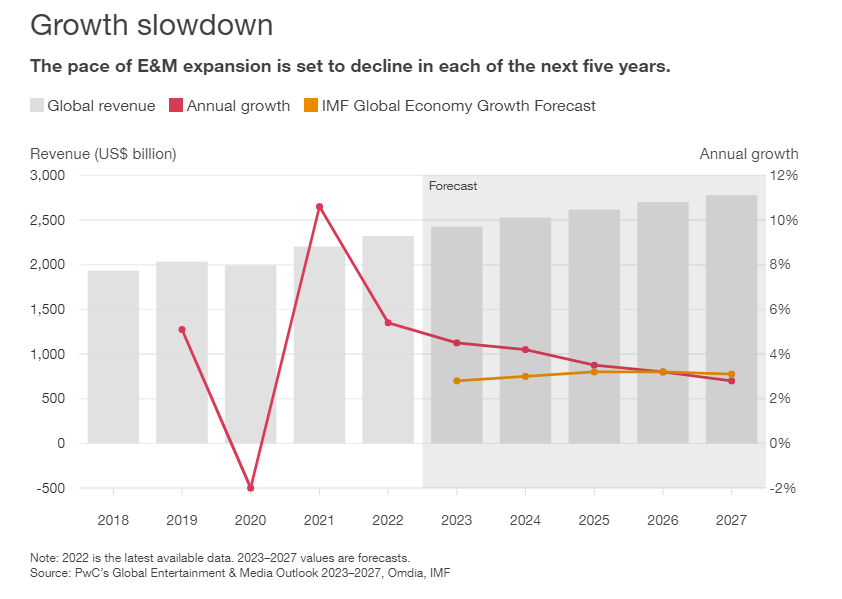
The causes of the slowdown are many. For some key sectors, the surge in revenue and attention that they experienced early in the pandemic ran out of steam. The creation of podcasts, which was among the industry’s major success stories during the pandemic, fell by an estimated 80% between 2020 and 2022.
But the main challenge—in 2022 and in the future—is consumer spending. Taxed by inflation, weary from the lingering effects of the pandemic, and facing the uncertainties of war and geopolitical instability, consumers are pulling back. Consumer spending historically has been the largest of the three broad categories the Outlook tracks. But consumer spending on E&M will grow at just a 2.4% CAGR between 2022 and 2027, when it will total US$903.2 billion.
As e-commerce and time spent on digital platforms grow, companies around the world will be spending significantly more in an effort to reach consumers at the point of purchase and at the point of decision. In 2025, advertising will surpass consumer spending as the largest category; internet ad spending, which grew 8.1% in 2022, is a powerful catalyst for growth. Between 2022 and 2027, global advertising revenue will rise from US$763.7 billion to US$952.6 billion, representing a 4.5% CAGR. This trajectory puts advertising on a path toward becoming the first of the three major E&M categories to reach US$1 trillion in annual revenue. Internet access, the third major category, will surpass consumer spending in 2026.
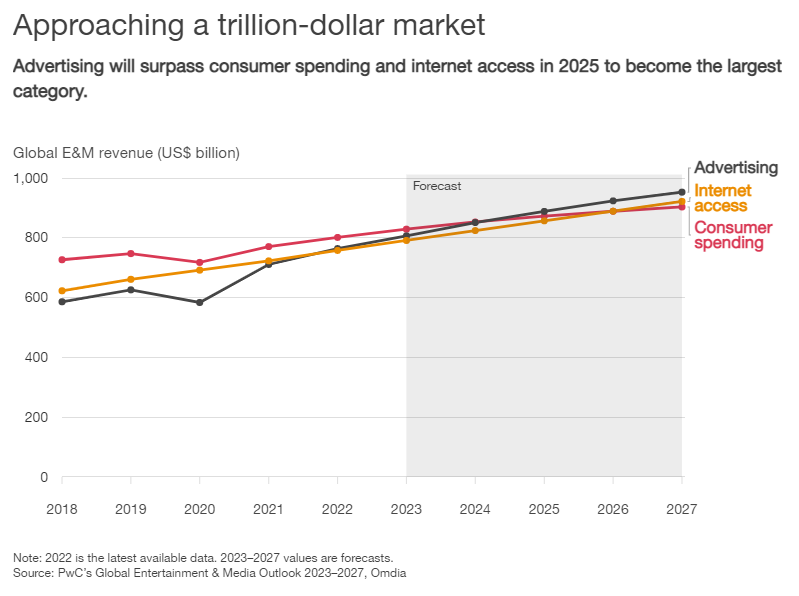
As E&M products become more digital and less analogue, the costs of production and distribution are declining. Meanwhile, in a world where content already abounds, competition among providers of digital content and services is increasing. These two trends have brought us to another inflection point. People may be spending more time in digital entertainment and media environments, but it won’t cost them more. As a result, consumer spending per capita on E&M will decrease as a share of overall spending, falling from 0.53% of average personal income in 2023 to 0.45% in 2027.
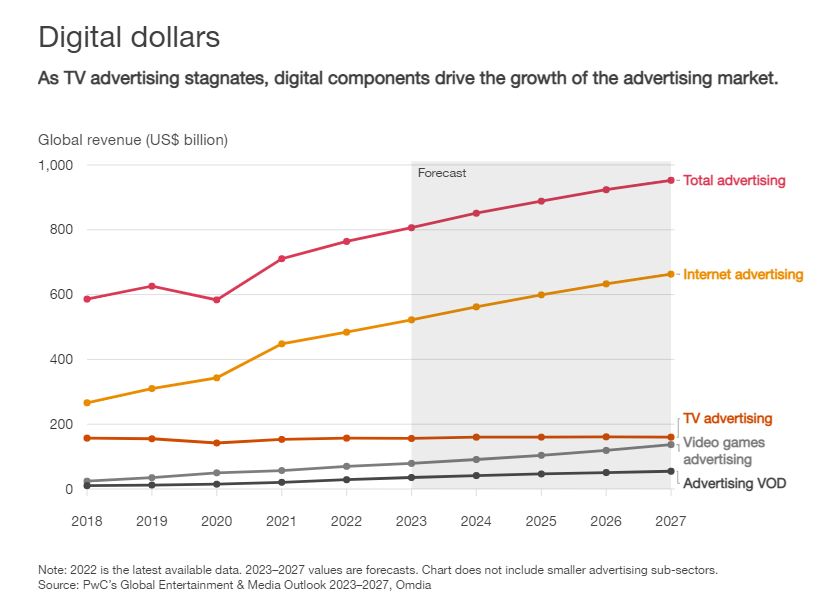
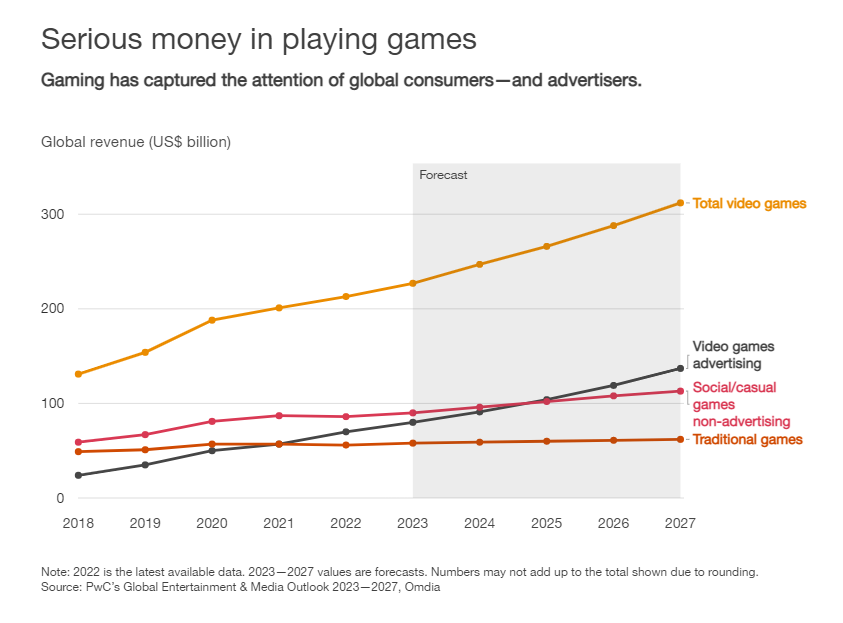
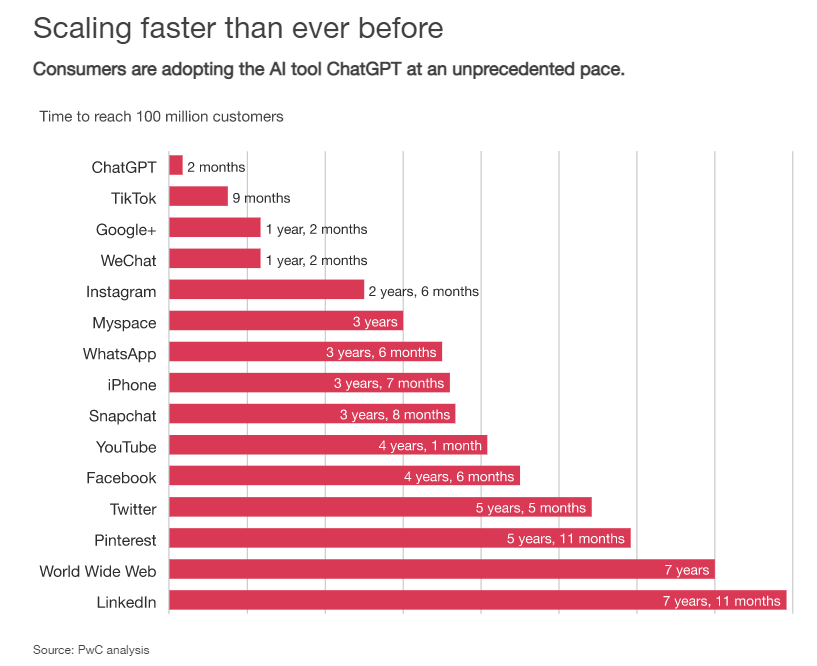
Generative AI is seemingly tailor-made for the increasingly digital E&M industry. It can boost productivity by automating tasks and workflows, particularly for more mundane or labour-intensive routines (such as editing), giving people more time to spend on higher-value activities. Use cases include automated generation of many types of content, virtual production with cloud support, and intelligent chatbots acting as frontline customer service representatives for consumer-facing businesses such as cable companies.
Generative AI is already enabling companies and individuals to think differently about how to create content. Experience shows that generative AI can dramatically increase the capability, speed and volume of content production—for example, by simultaneously creating scripts, voiceover, translations and images to create a video, or entire gaming worlds, at a fraction of the cost and time taken in the past. The explosion in AI-powered songwriting—the sheer scale of which has prompted action from Spotify—or the rapid emergence of AI-generated artworks further highlight the potential.
Companies are increasingly looking to harness AI in digital advertising. Recent examples include Nike’s 50th anniversary ‘Never Done Evolving’ campaign, featuring Serena Williams playing against herself throughout her career. In India, AI is enabling brands to reach across the country’s many languages and regions with generic templates that can be adapted and customised to different geographies with local messaging.
E&M will be on the front line as the usage and sophistication of generative AI grow in the years ahead. Because of the speed at which it iterates and develops, generative AI poses fundamental challenges to business models but also raises issues surrounding privacy, intellectual property, security and data privacy, environmental harm, and ethics. The high-quality text and visual outputs produced by generative AI could undermine the role and livelihood of traditional artists and writers—concerns raised by Hollywood writers, who went out on strike in the spring of 2023—or tap into original content without acknowledging sources or copyright. Generative AI outputs can also be inconsistent or inaccurate, or compromise data privacy, which highlights the importance of having a Responsible AI framework.
© 2024 All rights reserved. 北京转创国际管理咨询有限公司 备案号: 京ICP备19055770号-4
Transverture International Group Co Ltd, Guangdong Branch
地址:广州市天河区天河北路179号尚层国际1601
深圳市福田区深南中路2066号华能大厦
佛山顺德区北滘工业大道云创空间
东莞市大朗镇富丽东路226号松湖世家
梅州市丰顺县留隍镇新兴路881号
长沙市芙蓉区韶山北路139号文化大厦

欢迎来到本网站,请问有什么可以帮您?
稍后再说 现在咨询